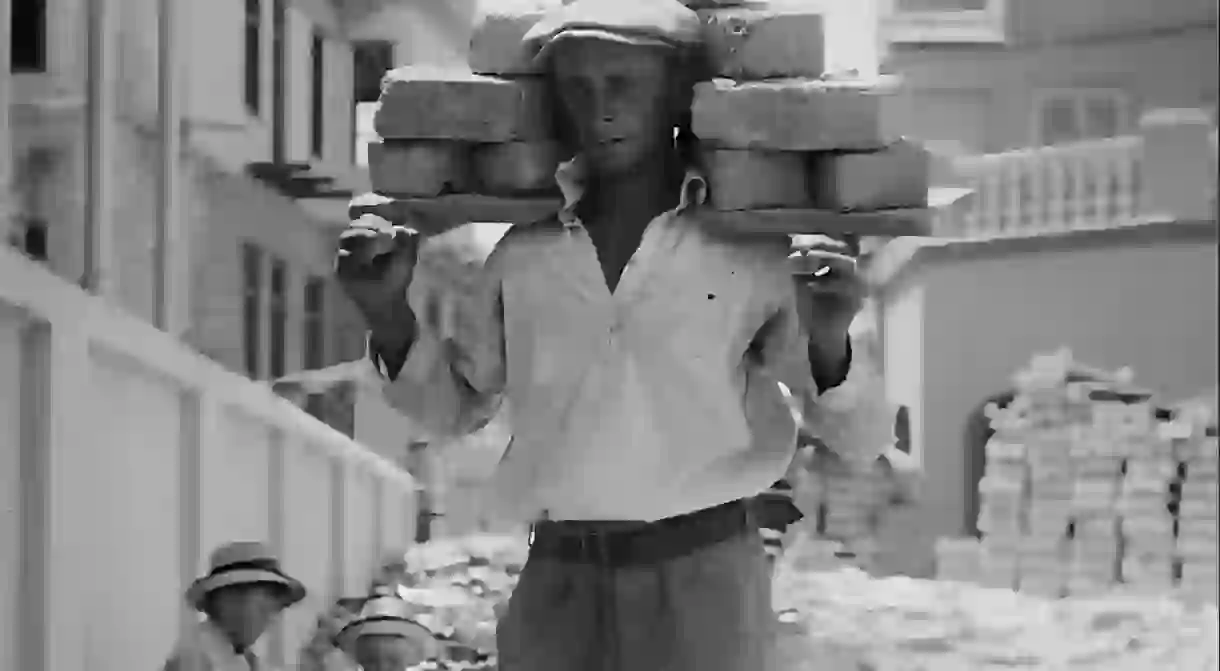The Birth of Tel Aviv: A Gathering of 60 Families on Jaffa's Sand Dunes

Over 100 years ago, some 66 Jewish families congregated on the sand dunes of what would become Tel Aviv, the first Hebrew city in a British colony called Palestina. Using seashells to divide the land between them, these families changed the course of history. This is the strange story of how Tel Aviv was born and built.
Pre-state Israel was full of small agricultural communities dedicated to creating a new type of Jew — strong and independent, capable of working the land and defending themselves. This was the polar opposite of the figure of the Viennese urban intellectual or the Eastern European religious student usually associated with Jews at the turn of the 19th century.
Increasingly, groups of business-oriented industrialists dreamed not of a communist kibbutz, but of a liberal Jewish city, one that would give full form to the “old-new” land envisaged by Israel’s conceptual father, Theodor Herzl. He laid out the dream of a secular Jewish state in his book, Altneuland.
The dream was that city would be a clean slate, a garden city in which commerce was forbidden and a new Jewish urban elite could be forged. Organizing under a collective called Ahuzat Bayit, the families purchased sand dunes on Kerem Jababli, just north of the ancient port city of Jaffa and south of two isolated Jewish neighborhoods. They were in search of a city: Neve Tzedek and the Yemenite Quarter.

They called their dream Tel Aviv, or Spring Hill, symbolizing a resonance springing out of the ancient land.
Seashells by the Seashore
The head of the Ahuzat Bayit collective, Akiva Aryeh Weiss, was faced with a problem: he had 66 families and a large area of sandy land dotted with the occasional orchard or vineyard. The land was already being developed, with the dunes being flattened to create a direct link between Neve Tzedek and Yeminte Quarter and the site of the new township. The different plots were divided along one main road (Hertzl Street), with four streets cutting across that still form a key axis in Tel Aviv (Ahad Ha’am, Rothschild Boulevard, Lilienblum, and Yehuda Halevi). But how were they to decide who got which plot?
Weiss concocted a brilliant scheme that ended up being an iconic and fateful action in the history of the Jewish people and the region: he used seashells to randomly match each family with a plot of land. He picked up 66 pale seashells and 66 dark ones, marking one group with plot numbers and the other with last names, and placed them in two boxes. A boy who was a son of one of the first families, reportedly Moshe Fogel, was tasked with pulling out one shell from each box, thus deciding each family’s fate.
On April 11, 1909, the diverse group — including industrialists, teachers and poets — threw their luck to the wind and laid the foundations of a city that, 39 years later, would herald the birth of Israel. The moment was captured on film by Abraham Suskind. In the iconic image, members of the collective can be seen standing where Tel Aviv’s famous Rothschild Boulevard now sits. According to legend, the man standing behind the group, on the slope of the sand dune, is Shlomo Feingold who opposed the idea, allegedly telling the others: “Are you mad! There’s no water here.”

The Birth of Nation
Among those competing for a plot was Meir Dizengoff, a bourgeois businessman Zionist who had big plans for both Israel and the budding city. His plot, located on Rothschild Boulevard, would turn into Israel’s first urban political center, with Dizengoff eventually becoming the city’s first mayor.

A few years later, when British Prime Minister Winston Churchill visited what was still a British colony, Dizengoff ordered the nascent avenue to be filled with trees, and dozens were stuck in the arid ground ahead of the visit. However, when Churchill arrived, the famous Israeli chutzpah kicked in and the first Tel Avivians flocked to see him, climbing the rootless trees, which in turn began to buckle. According to Tel Aviv lore, an always wise Churchill turned to his embarrassed host and told him: “That which has no roots is bound to wither.” The subtext was not lost on the young mayor.
Under Dizengoff, the young city began to flourish, with a school at the beginning of Herzl (now the Sholom Meir Building) and new roads and streets arising and allowing new neighborhoods — like the merchant neighborhood of Florentine and the Levinsky Market — to join the new city. After Dizengoff’s death in 1936, his home was turned into the city’s first museum, dedicated to preserving Tel Aviv’s history.
In May 1948, the leader of the Jewish movement in Israel, David Ben-Gurion, declared independence and announced the formation of the modern state of Israel. This took place inside Dizengoff’s former house. People congregated outside on Rothschild, as well as around radios across the nation and the world to hear the news.

The Dizengoff House still stands. There is a monument there honoring both the 66 original families of the White City and that historic day in which Tel Aviv made its voice heard for the first time. A statue of Dizengoff riding his famous horse stands guard outside.














